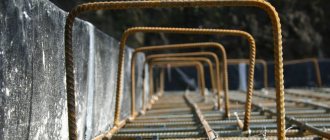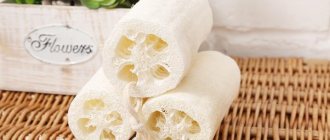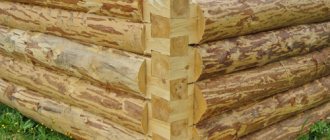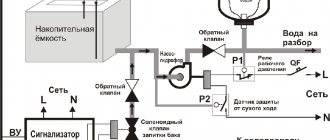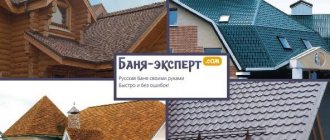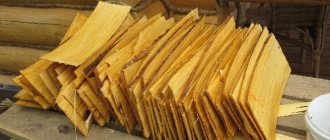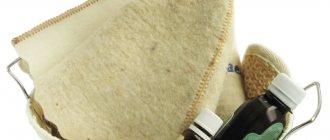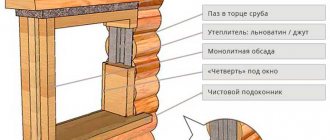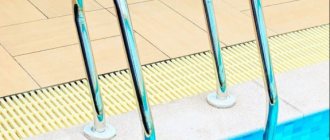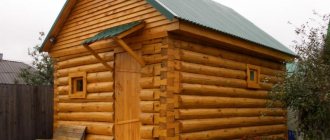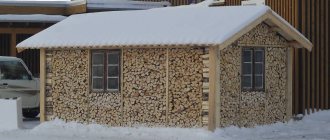For structures made of concrete and brick, it is very important during construction not to forget to treat them with special waterproofing agents.
To avoid further damage to structures due to exposure to water. The most effective way to protect concrete is penetrating waterproofing. In our article we will look at instructions for using penetrating waterproofing and reviews of Penetron. Application of Penetron. Penetron is suitable for waterproofing any type of surface, because this brand produces a wide range of moisture-proof materials.
For example, there are products for waterproofing concrete, joints, as well as special additives that are added to the concrete mixture to increase its waterproofing.
Preparing the base for applying Penetron
For full interaction of Penetron’s active substances with concrete components, the surface must be accessible for the solution to penetrate deeper. In the case of repairs to structures that have been in long-term operation, this requirement is difficult to fulfill. The opening of microcracks and pores is possible only after thorough cleaning of laitance under a strong stream of water. Mechanical removal of stubborn dirt only aggravates the situation, giving the surface smoothness.
Application of penetrating solution
- If the surface is heterogeneous and has defects, the adjacent areas are cleaned by removing the loose layer. It is better to do water or sandblasting, but treatment with a hard metal brush is undesirable. The cavities resulting from the leak should also be cleaned of loose material.
- Penetrating waterproofing with Penetron is diluted with water according to the manufacturer’s recommendations and the concrete surface is wetted twice with water.
- Using a paint brush, distribute the penetrating agent over the surface. This operation can be performed using a construction sprayer, but then the consumption of Penetron for waterproofing will be slightly higher.
Preparation of the product
To prevent the solution from thickening, it is stirred from time to time during the work process.
To properly prepare the solution, you need to combine the dry waterproofing agent and water according to the recipe. By stirring, achieve homogeneity of the mixture. The consumption is 1:2, that is, part water to two parts waterproofing admixture. For example, for 1 kg of Penetron, 400 grams of liquid are consumed.
You need to dilute the solution by pouring water into the dry mixture, and only this way. Stir for two minutes with your hands or a drill at low speed. As a result, you should get a creamy mixture. You need to make the amount of solution whose consumption will end in a maximum of half an hour. To maintain the original thickness of the mixture, it must be constantly shaken.
Return to contents
Advantages of Penetron waterproofing
- The ability of penetrating Penetron to exhibit its activity only when the concrete is moistened significantly simplifies the waterproofing process, since it does not require preliminary drying of the surface.
- The technology for treating structures with Penetron is extremely simple. To create a protective barrier, you only need desire and attentiveness when reading the instructions. And as a tool you can use a regular paint brush or sprayer.
- The effectiveness of the waterproofing agent does not depend on the method of application. Its use both outside and indoors will ensure reliable water resistance of structures.
- A surface impregnated with Penetron solution becomes not only water-resistant, but also frost-resistant. Due to the increased density and lack of free moisture, destructive dynamic loads are not created in the concrete structure. Thus its density does not change.
- The action of Penetron in concrete ensures high durability of the structure, since when one section is destroyed, the integrity of the rest of the structure does not lose its water resistance. In the case of bitumen or roll waterproofing, local damage leads to water penetration into adjacent areas and peeling of the coating.
- Impregnation of reinforced concrete structures with Penetron solution makes it possible to eliminate corrosion of the reinforcement inside.
- An environmentally friendly and effective substance is recommended for the protection of concrete structures for a wide variety of purposes: swimming pools, drinking wells, inspection pits, basements, foundations, etc.
Operating principle
An increased chemical reaction occurs on the surface of concrete coated with Penetron. At the same time, small revolutions of chemical action are observed inside the material. Therefore, the product exerts one-sided diffuse pressure, due to which the solution particles penetrate deep into the concrete, thereby equalizing the force of chemical processes.
Note that the higher the humidity level of the treated surface, the better, the faster the particles of the protective solution penetrate into the material.
Inside the building material, the active substances of the waterproofing agent are broken down in the liquid present inside the concrete, thereby interacting with aluminum and calcium ions, as well as with salts and metal oxides. These processes contribute to the development of salts of a different kind that react with water, thus forming non-cleavable crystalline hydrates. They cover the entire free internal space of the building material, becoming one with it.
Cells, as well as other free microscopic spaces of concrete filled with waterproofing crystals, do not absorb moisture, since the forces of surface tension of water begin to function. The crystalline structure inside the building material prevents liquid seepage even during increased hydrostatic conditions.
The speed of the processes described above is influenced by many factors: the level of porosity, density of the building material, degree of humidity and temperature indicators of the external environment. If the liquid evaporates, the crystallization of Penetron will stop. When the humidity level increases, for example during precipitation, the proliferation of crystals inside the concrete is restored. This process is called “self-curing” of the concrete mixture.
Return to contents
Disadvantages of waterproofing with Penetron
The high functional characteristics of Penetron do not exclude its disadvantages:
- Can only be used for treating concrete surfaces. In the case of a brick wall or a wooden house, this is ineffective.
- High cost compared to roll or coating waterproofing products. But this drawback is partially eliminated by the more economical consumption of Penetron per m2.
- The need to clean the surface to open the porous structure of concrete.
Workflow Description
I will tell you what you need to assemble for work, how to properly prepare the surface and apply the composition.
Materials and tools
Of all the waterproofing materials, this option is the simplest. The Penetron waterproofing system requires a dry mixture and clean warm water. The approximate consumption of the composition is 1 kg, the water consumption depends on the degree of moisture in the concrete.
Cracks with an opening size of more than 0.5 mm must first be sealed with a special compound and only then treatment with Penetron should begin.
The tool you need is the following:
- High pressure washer . I highly recommend using this equipment when preparing the surface and moistening it as it gives the best effect. If you and your friends don’t have such an installation, rent it; the cost of the service for 1-2 days is low, but you can perfectly prepare the grounds;
High pressure washing allows you to thoroughly prepare surfaces before waterproofing
- Hammer . Necessary if there is an old plaster layer on the concrete or brick surface. It must be removed to expose the base before processing it. A peak or a special blade is used as equipment for a perforator;
Tools for the hammer drill are selected depending on the type of finish that needs to be removed
- Muck brush . It is very convenient for her to apply the composition to the surface. Choose options from 100 mm wide with dense and long synthetic pile;
Dense, hard pile on the mat allows you to quickly and efficiently apply Penetron to the surface
- Wire brush . Used for preparing smooth surfaces and for treating walls before finishing after waterproofing.
Preparing the base
A brick or concrete surface is prepared as follows:
| Illustration | Description of the stage |
| Old finish is removed . This stage is carried out if there are finishing materials on the walls or floor. They must be carefully removed so that the waterproofing composition penetrates the surface as best as possible. | |
| The smooth surface is treated with a wire brush. This is necessary in order to improve the adhesion of the composition. The work can be done either with a hand brush or with a special attachment that is placed on a grinder or drill. Using a power tool greatly simplifies and speeds up the work process. | |
| The surface is cleaned of dust and debris . This is done either with a brush or with a construction vacuum cleaner. All major contaminants must be removed at this stage, so as not to drive dirt across the surface later. | |
| The surface is thoroughly washed . Installing high pressure will help remove from the base all the remaining sand and other compounds that remain in hard-to-reach areas. Try to process the entire surface without missing a single area. | |
| The base is moistened. This is the second stage of processing. The surface of the concrete must be saturated with moisture as best as possible. As for the walls, they are treated until the water stops being absorbed and flows onto the floor. As for the floor, it needs to be moistened until puddles begin to form on the surface, which are not absorbed over time. After finishing work, remove all excess water with a rag. |
Application of the composition
Do-it-yourself processing is done as follows:
| Illustration | Description of the stage |
| The dry mixture is poured into the container . Due to the presence of active chemical components in the composition, all work must be carried out with rubber gloves. I advise you to pour the composition in quantities of multiples of 0.5 kg, this will make it much easier to calculate the proportions of water. | |
| Water is added to the composition. The preparation instructions strictly instruct to introduce liquid into the dry mixture, and not vice versa. The amount of water is 200 grams per 0.5 kg of dry powder. When preparing by hand, the mixture is thoroughly kneaded with your fingers until a homogeneous consistency without lumps is obtained.
| |
| Large volumes are prepared using a drill with a mixer . It is important to maintain the proportions of the components, and the stirring process itself is quick and efficient. | |
| The first layer is applied. Everything is very simple: the solution is distributed in a thick layer over the surface using a paintbrush. Moreover, the composition is distributed in separate strokes; there is no need to move the brush over one place in different directions. If the volume of work is large, then it makes sense to use a special spray gun for applying Penetron. | |
| Particular attention is paid to complex areas of the structure . These include places of waterproofing between the concrete floor and the wall, as well as communication entries and other elements that violate the integrity of the surface. Apply the composition especially carefully so that not even a small area remains uncoated. | |
After 1-2 hours, a second layer of Penetron is applied. The process looks like this:
| |
| The surface must be kept moist after treatment.. This is done within the first 3 days. 1 or 2 times a day you need to moisten the floor or walls. The base should be constantly wet, as in the photo. As for the floor, you can lay a film on it; it will not release moisture. After three days it needs to be removed. Before further finishing, the surface must dry for at least 3 weeks. Only after this period can paint or plaster be applied. |
Where can Penetron waterproofing be used?
The main objects recommended for treatment with Penetron are various concrete structures and plastered surfaces:
- collapsing walls and foundation of the house. In this case, the use of other types of waterproofing may be useless due to the loose surface structure. Penetrating waterproofing will not only protect structures, but also increase their density and resistance to moisture and temperature fluctuations;
- various surface defects, such as peeling, cracks, seams, hard-to-reach places. Often the use of Penetron is combined with roll waterproofing, which requires mandatory leveling of the surface. In this case, unevenness is eliminated using plaster containing Penetron;
- elimination of capillary dampening of walls and floors of basements from the inside, when other types of waterproofing provide only superficial protection. Penetron is indispensable in this situation. Since its activity is caused by the moisture in the cement, the surface does not require drying. Treatment can begin immediately when a leak is detected. In addition, due to deep penetration into the concrete layer, peeling of the protection under the influence of groundwater is excluded. The use of other types of waterproofing does not provide such confidence.
Waterproofing based on Penetron is absolutely harmless to humans and animals. Even after prolonged exposure to water, treated surfaces do not emit harmful or hazardous substances. This advantage allows you to process wells and various concrete tanks with drinking water. The only requirement for structures requiring processing is the use of cement in their construction.
Specifications
| No. | Material characteristics | Meaning | Measurement methods |
| 1 | Appearance | Free-flowing gray powder without lumps or mechanical impurities | TU 5745-001-77921756-2006 |
| 2 | Humidity, %, by weight, no more | 0,6 | TU 5745-001-77921756-2006 |
| 3 | Setting time, min.: | TU 5745-001-77921756-2006 | |
| start, not earlier | 40 | ||
| end, no later | 90 | ||
| 4 | Bulk density in standard uncompacted state, kg/m3 | 1200±50 | TU 5745-001-77921756-2006 |
| 5 | Increasing the waterproof grade of concrete after treatment, steps, no less | 4 | TU 5745-001-77921756-2006 |
| 6 | Increase in compressive strength of treated concrete from initial treatment, %, not less | 10,0 | TU 5745-001-77921756-2006 |
| 7 | Increasing the frost resistance of concrete after treatment, cycles, not less | 100 | GOST 10060.1-95 |
| 8 | Resistance of concrete after treatment to acid solutions: HCl, H2SO4 | racks | Art. SEV 5852-86 |
| 9 | Resistance of concrete after treatment to alkalis: NaOH | racks | Art. SEV 5852-86 |
| 10 | Resistance of concrete after treatment to the action of light and dark petroleum products | racks | Art. SEV 5852-86 |
| 11 | Resistance of concrete after treatment to gamma irradiation with a dose of 3000 Mrad | racks | Conclusion of PTO “Progress” No. 22/26 dated 05/06/03 |
| 12 | Ultraviolet | has no effect | Art. SEV 5852-86 |
| 13 | Applicability for drinking water tanks | allowed | Hygienic certificate TU 5745-001-77921756-2006 |
| 14 | Acidity of the application environment, pH | from 3 to 11 | Art. SEV 5852-86 |
| 15 | Application: surface temperature, ° C, not less | +5 | TU 5745-001-77921756-2006 |
| 16 | Operating temperature, ° C | in accordance with concrete operating standards | TU 5745-001-77921756-2006 |
| 17 | Material storage conditions, ° C | in rooms of any humidity at temperatures from -80 to +80 | TU 5745-001-77921756-2006 |
| 18 | Guaranteed shelf life of the material, months, not less | 18 | TU 5745-001-77921756-2006 |
Features of using Penetron for the protection of reinforced concrete structures
Building materials in laboratory studies can withstand high loads and exhibit water resistance, but at the same time cannot provide waterproofing of the room. This is explained by the fact that when connecting individual structures, insufficiently strong cement is used. The loose structure of the seams and joints of the walls and ceilings does not prevent water from penetrating into the room.
In this case, even the use of highly moisture-resistant cement does not prevent the walls from getting wet. Reliable protection against moisture and flooding can only be achieved using a set of products, including various gaskets, sealants and waterproofing tapes.
How to prepare the mixture
High-quality waterproofing is prepared in the proportion of 1 kg of dry Penetron per 400 ml of water. It should be taken into account that you need to pour water into the mixture, and not vice versa. Then, for several minutes, the solution is thoroughly mixed until a homogeneous substance is obtained, similar in consistency to sour cream.
Do not over-prepare the mixture. It is recommended to make a batch based on how much solution can be used in half an hour of work. You also need to periodically stir the finished mixture, not allowing it to thicken. If it has thickened, then you should not revive it by adding water. It is best to prepare a new solution.

